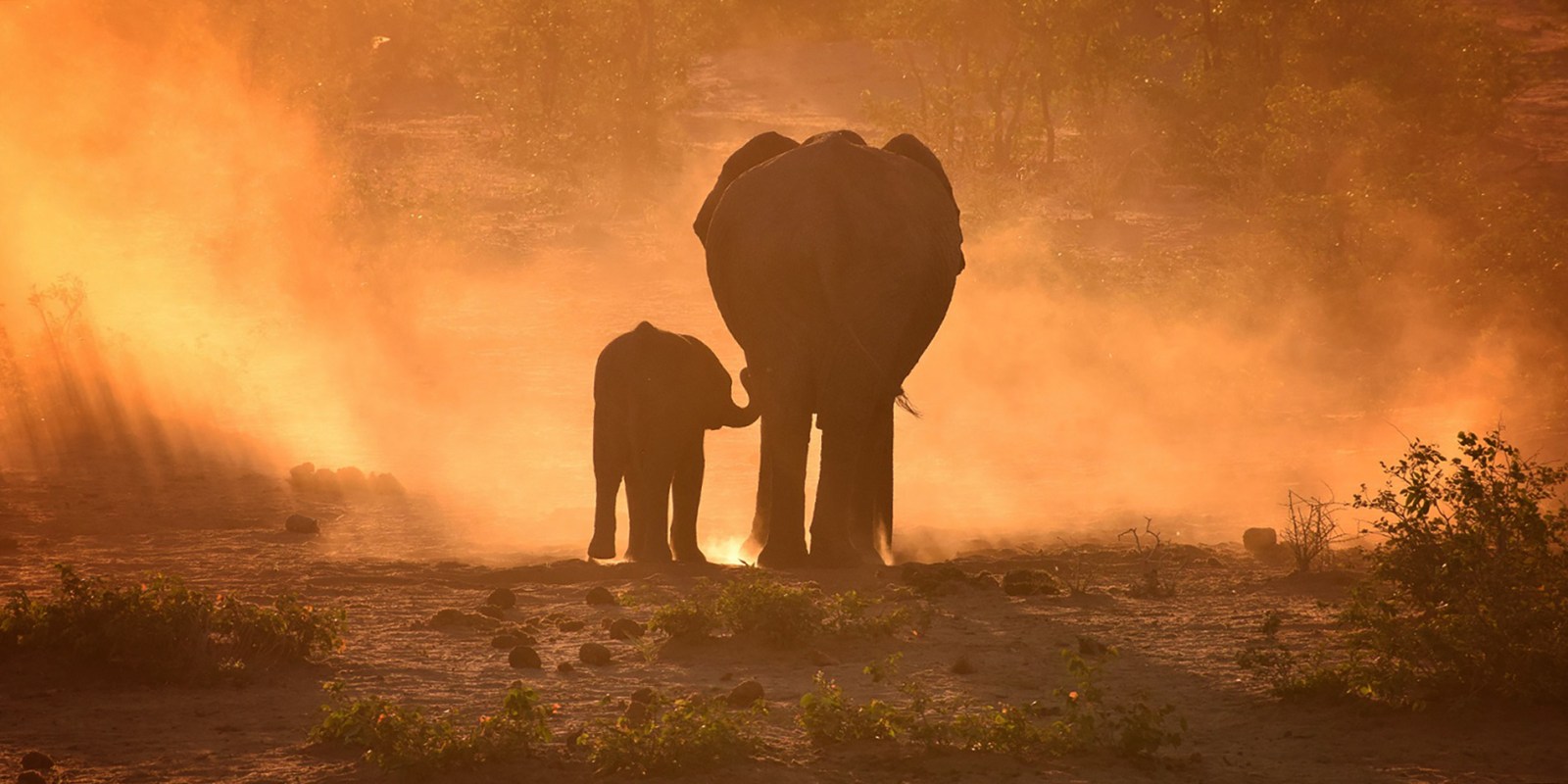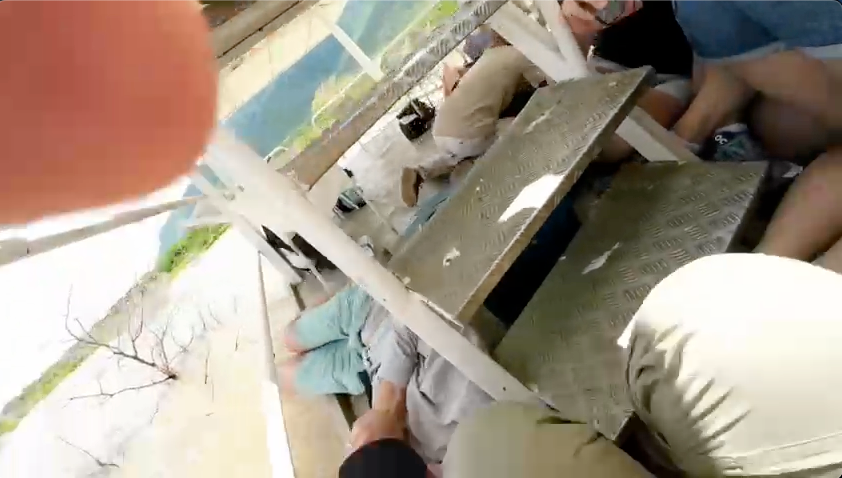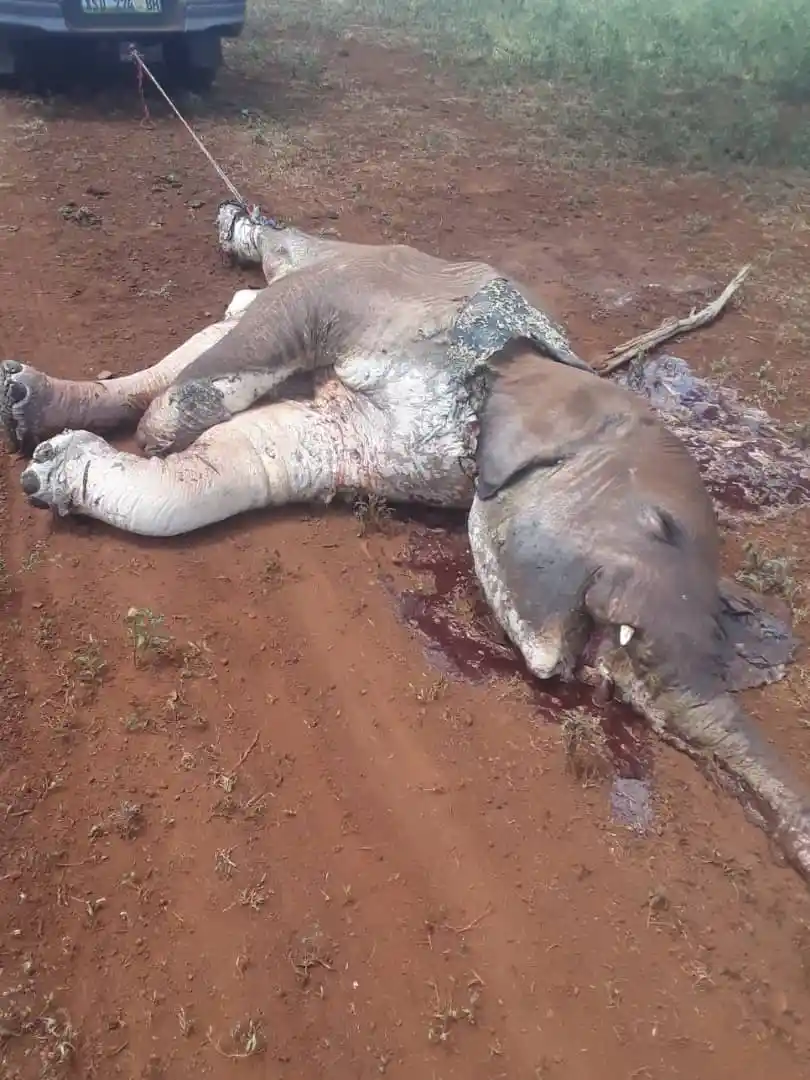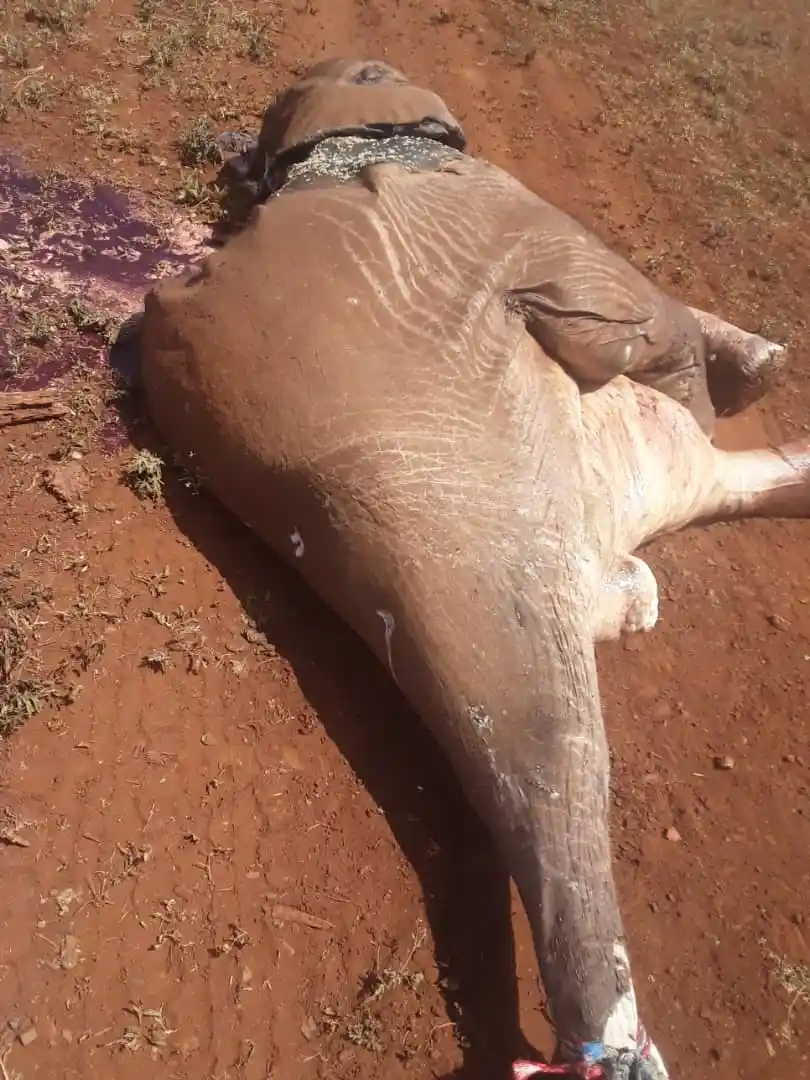Posted on September 8, 2022 by Pete Ruinard and Paul Cryer in the OPINION EDITORIAL post series.

Elephant gathering at the water’s edge in Pongola Game Reserve
The recent article by Malcolm Thomson on Pongola’s elephant management crisis included vital perspectives on elephant management strategies within Pongola Game Reserve (PGR) in KwaZulu-Natal. We hope to set some facts straight in response to Thomson’s sentiments.
Thomson’s assertions were filled with inaccuracies, not only about general elephant management and its applicable laws, but also regarding the long process of building scientific and managerial knowledge about elephants living in relatively small and contained reserves. Worse still, there are glaring inaccuracies in these assertions that apply to the elephant population that Malcolm Thomson is referring to in his piece.
Elephant management must be viewed from several geographical and temporal scales simultaneously, from continental and national perspectives to small fenced reserves. Even the roughest estimates of elephant numbers show a dramatic decline in Africa over the last hundred years, so it is misleading to argue that Africa has too many elephants, and their endangered status confirms this. When viewing the broader situation, the issue of localised areas with too many elephants is a problem of distribution rather than over-population. This is especially so considering that 76% of Africa’s elephants are transboundary.
The intricacies of elephant management
In instituting the National Norms and Standards for the Management of Elephants, the South African government has taken a bold and progressive step towards managing elephants in terms of broad and local objectives while doing its best to include updated knowledge on elephant biology. The comments in Thomson’s article from Minister of Forestry, Fisheries and the Environment, Barbara Creecy, confirm a government commitment to integrated problem solving and public/private partnerships. The Minister comments that there is a “need for innovative and balanced partnership arrangements between state protected areas and adjacent private wildlife areas” to develop “win-win sustainable arrangements, with strong conservation outcomes”.
Malcolm Thomson asserts that the wishes of private landowners and the well-being of small, contained elephant populations have been ignored by the broader elephant management strategies and the Norms and Standards in particular. While the Norms and Standards are far from perfect, requiring periodic updating and revision, they make provision for private landowners with elephants to participate in a more inclusive and holistic elephant strategy. The amended Norms and Standards will likely be gazetted for implementation during 2022. By timeously submitting their elephant management plans to their provincial conservation authorities, reserve owners can benefit from a wealth of information, knowledge and funding. If, however, a landowner submits plans late or if those plans reveal a strategy aimed at personal wealth acquisition to the detriment of biodiversity conservation, then the system will expose those deficiencies. The PGR elephant management plan was submitted to the provincial authority on 8 September 2021 without sufficient time for review or to obtain the necessary provincial signatories before their existing plan expired on 16 November 2021. There is added significance with the late PGR application in that the reserve’s draft plan involved cooperation with neighbouring landowners, such that the elephants could move between multiple areas. This would make more elephant habitat available and relieve pressure on PGR. This central strategy of elephant range expansion within the draft revision of the PGR elephant management plan was omitted from Malcolm Thomson’s writing, leaving an impression that the elephant population pressure on PGR is more severe than it is in reality and that there is no alternative other than lethal control. The complexity of having elephants on small reserves is not unique to PGR, and there has been a large volume of peer-reviewed studies on these exact situations, with much of this research being utilised in the compilation and review of the Norms and Standards. Small private reserves have access to this work and can contribute meaningfully to advancements in this field.
Contemplating immunocontraception
Within the Norms and Standards, there is a hierarchy of actions about limiting elephant population numbers. One of these is immunocontraception, which Thomson dismisses as impractical, unethical and costly. Peer-reviewed scientific data collected and published over nearly 30 years would suggest otherwise. Further work on immunocontraception methods and long-term effects on population dynamics are ongoing. Immunocontraception is reversible, delivered quickly and remotely, with only short-term herd interference, and there are no hormonally induced behavioural effects. Immunocontraception is recommended in the Norms and Standards as one of the first go-to methods. It is used by 42 national, provincial, private and community reserves in South Africa (excluding the Kruger National Park), with over 1,200 cows currently under treatment. Thomson’s claims that immunocontraception is unethical are unfounded.
As for it being costly, the expenses of elephant immunocontraception are comparable with management interventions for other species, such as lion contraception, disease-free buffalo testing and even game census – all of which are part and parcel of reserve management. In the case of immunocontraception, the literature has shown that the cost benefits of limiting elephant population growth outweigh the expenditure. Of additional relevance here is that Humane Society International – Africa offered PGR immunocontraception for three years such that the costs would not fall on PGR. While there may have been certain conditions associated with this process, free immunocontraception was made available to PGR and was not accepted. What is clear is that Thomson’s dismissal of immunocontraception is unwarranted.
Thomson also comments on the difficulties that arise in trying to expand the land available to the elephants. But the elephants in the PGR case have achieved habitat expansion on their own, having shifted to the neighbouring Pongola Nature Reserve managed by Ezemvelo KZN Wildlife (Ezemvelo). The movement of these elephants to adjacent land relieves the pressure that Thomson was bemoaning (at the time of writing, there were no elephant herds in PGR “destroying habitat”). The managers and ecologists of Ezemvelo are working on the details of this impromptu elephant distribution to determine whether it can be maintained to the benefit of elephants, ecosystems and stakeholders. It should be added that, despite many logistical and financial constraints, Ezemvelo is doing excellent and progressive work, including holding meetings with local landowners and communities. (It is also worth noting that PGR management attended these meetings without expressing the views in Thomson’s article. Minutes of those meetings are public documents).
Elephant translocation and habitat expansion
Thomson’s criticism of translocation is similarly misleading. Knowledge of elephant translocation has increased enormously over the past two decades, with routine operations conducted today that were unheard of 25 years ago. Progress regarding the logistics of moving elephants and the technical means of capturing them, combined with veterinary advancements, is resulting in ongoing improvements that secure the greater well-being of individual elephants and family/group structure. This facilitates a far greater success rate with translocations. It also increases the distances that elephant groups can be moved. This, in turn, means that the possible sites for translocations are growing in number and distance from the source population: elephant translocation can now be viewed from a continental perspective. The value of this knowledge as an emerging management tool is increasingly realised and will significantly affect what is possible in African elephant conservation.
Within the United Nations Convention on Biological Diversity (of which South Africa is a signatory), large interconnected protected areas are identified as one of the solutions to the impending biodiversity crisis (the effects of which would overshadow the economic impact of Covid-19). The presence of megaherbivores within an interconnected protected area network is one of the indicators of success. But it should be stressed that a critical component of expanding areas for biodiversity protection is to avoid the errors of the past, where environmental protection was used as a thinly veiled ploy for the wealth-capture of elites. In this country (and others), this involved legalising a process that commodified and exploited the environment and all those South African people outside of the defined elites. Historical examples of this across the colonised world included promulgating legislation that denied people access to land they considered sacred and had utilised for centuries to sustain their livelihoods. In more recent (and current) renditions of the same principle, environments of critical ecological importance, both locally and globally, are being compromised and traded for political gain and monetary extraction.
While work is being done on identifying and protecting critical biodiversity areas, existing gene pools of species need to be protected. In the case of elephants, this includes limiting population growth (the root of the problem) in contained areas until bolder plans for elephant introductions in Africa are realised and feasible. In anticipation of an expanded purpose, immunocontraception research is dealing with long-term population dynamics and advanced delivery methods. Current methods do not hold all the answers, but these fields are advancing fast.
Elephant management is changing
Thomson’s summation of elephant management is simplistic, exploitative, elitist and cherry-picks scientific evidence to arrive at outdated and erroneous conclusions. For example, claiming that “all species should be managed under similar principles” glosses over the fact that elephants have advanced levels of intelligence and self-awareness, with complex communication illustrating focused sentience, emotional attachment and empathy. The Norms and Standards recognise this, and recognition of this fact is a guiding principle within elephant management strategies. As our awareness of elephants’ advanced intellectual, emotional and social capacities increases and becomes widely recognised, public perception of appropriate elephant treatment shifts. Management strategies that were acceptable three decades ago are unlikely to endure. Owners and managers of elephant reserves who do not take cognisance of this will likely suffer the consequences of the public’s disfavour and consequent economic censure.
The Norms and Standards recognise that elephants are indeed “special”, but it should be made clear that the regulation of hunting and culling are included within the document. They are, however, recognised as very different activities, not to be conflated. Within the Norms and Standards, culling is the last resort on a hierarchy of potential management actions, some of which are mentioned (and dismissed) in Thomson’s article: habitat manipulation, contraception, and translocation. For culling to be considered, all of those alternatives must have been proven to be justifiably impractical or unfeasible.
The hunting of elephants is legal in South Africa; some people want to hunt elephants, and parties have built businesses out of this demand. The Norms and Standards recognise and accommodate this. Had PGR adhered to the regulations, they could legally hunt elephants. Reserve managers should understand that culling and hunting are regulated differently for good reasons. Blame cannot be laid on the Norms and Standards due to poor action on a reserve’s part. Advocating for managing elephants without considering the bigger picture and the logic behind certain restrictions is unreasonable. Lack of engagement with neighbours, inaction to explore options for sponsored immunocontraception through available structures, and being slow on the draw when revising elephant management plans are symptoms of poor forward planning.
Final thoughts
There was a good reason why the Norms and Standards were created, with specific guidelines for Elephant Management Plans. This was partly to overcome irresponsible and unethical elephant management approaches and actions, which in turn reflected negatively on the entire country’s elephant management ethic. Malcolm Thomson’s view of elephant management could take us back there, which, far from the Norms and Standards’ progressive purpose, is entirely regressive.
Thomson’s perceptions do not necessarily reflect the views of all stakeholders involved in PGR. His statements belie current scientific knowledge and are contrary to global and local strategies to address the impending planetary crisis of biodiversity loss. The laws, regulations, and Norms and Standards around elephant management apply to everyone, including the South African government and its departments and land management agencies. The court application Thomson misquotes in his article, in which HSI-Africa is questioning the legality of the 2022 hunting quotas, is an example of an animal protection and conservation NGO holding the government accountable to its laws and regulations. That is a foundational aspect of a healthy democracy and civic activism that ensures good governance and accountability for the good of all people and the environment on which we are all entirely dependent. Thomson’s re-quote, “if it pays, it stays”, is as outdated as it is dangerous; the understanding of planetary boundaries has coined a far more sobering alternative phrase that incorporates the value and economic positioning of the earth’s oceans, atmosphere and biodiversity to humans: “if it doesn’t stay, humanity will pay”.

















